How to Handle and Display Ceramic Art Professionally
Welcome to the fascinating world of ceramic art! Whether you're an artist, collector, or simply an admirer, knowing how to handle and display ceramic pieces is crucial for preserving their beauty and integrity. In this article, we will explore effective strategies that not only ensure the preservation of your ceramics but also enhance their aesthetic appeal. After all, what's the point of owning beautiful ceramic art if you can't showcase it properly? Let’s dive in!
Ceramic art is a rich tapestry woven from various forms, techniques, and cultural histories. From ancient pottery to modern sculptures, ceramics have played a significant role in human expression. Understanding the different types of ceramic art—such as stoneware, porcelain, and earthenware—can provide a solid foundation for proper handling and display. Each type has its unique characteristics and significance, making it essential to appreciate the artistry behind each piece. So, whether you're gazing at a delicate porcelain vase or a robust stoneware bowl, recognizing the craftsmanship can deepen your connection to the art.
Handling ceramic art requires a gentle touch and a keen awareness of its fragility. To prevent damage, always approach your ceramics with care. Here are some essential techniques and precautions to keep in mind:
- Always wash your hands before handling ceramics to avoid transferring oils or dirt.
- When lifting pieces, support them from the bottom rather than holding them by the rim or handle.
- Use both hands when moving larger pieces to ensure stability.
By following these guidelines, you can significantly reduce the risk of accidental damage during transportation or display.
Maintaining the appearance of ceramic art is just as important as handling it carefully. Proper cleaning techniques are vital for preserving the integrity of the materials. Avoid harsh chemicals that can cause discoloration or damage. Instead, opt for mild soap and warm water, using a soft cloth or sponge to gently wipe the surface. If your piece has intricate details or hard-to-reach areas, a soft-bristle brush can be a lifesaver. Remember, the goal is to keep your ceramics looking stunning without compromising their quality.
Using the right tools can make a significant difference in the cleaning process. Here are some recommended tools:
- Soft cloths: Ideal for general wiping and dusting.
- Soft-bristle brushes: Great for detailed cleaning.
- Mild soap: Essential for safe cleaning solutions.
Investing in these tools can save you from potential mishaps and ensure that your ceramics remain in pristine condition.
Even with the best intentions, mistakes can happen. Here are some common errors to steer clear of:
- Using abrasive materials that scratch the surface.
- Soaking ceramics in water, which can weaken glazes.
- Ignoring the manufacturer's cleaning instructions.
By being aware of these pitfalls, you can ensure the longevity of your ceramic pieces.
The way you display ceramic art can dramatically enhance its visual impact. A well-thought-out display not only showcases the beauty of the pieces but also protects them from potential harm. Consider using stands or pedestals to elevate your ceramics, allowing them to be viewed from different angles. Grouping pieces by color or theme can create a cohesive look, while also drawing attention to individual works. Remember, the goal is to create a display that is both aesthetically pleasing and safe for your cherished ceramics.
The environment in which ceramics are displayed can significantly affect their condition. Factors like light, temperature, and humidity should be considered to ensure optimal display. For instance, direct sunlight can fade colors over time, while excessive humidity can lead to mold or deterioration. Aim for a stable environment with controlled lighting and moderate humidity levels to keep your ceramics in top shape.
Lighting plays a critical role in showcasing ceramic art. The right lighting can highlight textures and colors, making your pieces truly shine. Consider using soft, diffused lighting to avoid harsh shadows, and position lights at angles that enhance the form of the ceramics. Avoid fluorescent lights, which can emit UV rays that may damage the glaze over time. Instead, opt for LED lights that are energy-efficient and safe for your artworks.
Selecting the right display case or shelving is essential for both protection and aesthetics. Here are some options to consider:
- Glass display cases: Provide protection while allowing visibility.
- Floating shelves: Create a modern look while saving space.
- Curio cabinets: Offer a traditional way to showcase collections.
Whichever option you choose, ensure that it complements the style of your ceramics and provides a safe environment for display.
Q: How often should I clean my ceramic art?
A: It depends on the environment and how often the pieces are handled. Regular dusting is advisable, while deeper cleaning can be done every few months.
Q: Can I display ceramics outdoors?
A: It's best to avoid outdoor displays, as elements like sunlight and moisture can damage ceramics over time.
Q: What should I do if a ceramic piece gets chipped?
A: For minor chips, consider using a specialized ceramic adhesive. For significant damage, consult a professional restorer.
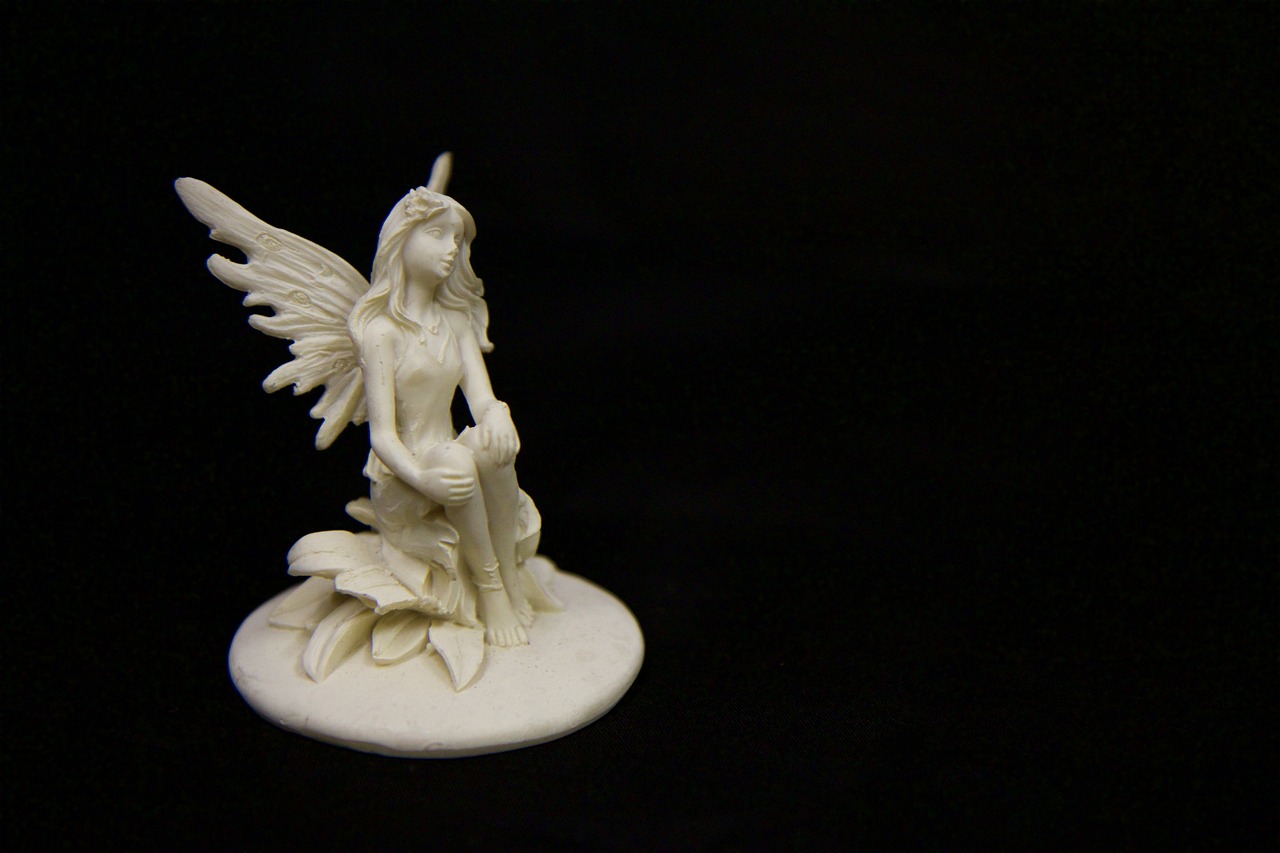
Understanding Ceramic Art
This article explores effective strategies for handling and showcasing ceramic art, ensuring preservation and enhancing aesthetic appeal. Learn best practices for display, care, and the overall presentation of ceramic pieces.
Ceramic art is a fascinating realm that combines creativity and craftsmanship, encompassing a variety of forms and techniques. It dates back thousands of years, with its roots embedded deeply in human history. From ancient pottery used for practical purposes to modern sculptural pieces that challenge our perceptions, ceramic art reflects the evolution of human expression. The significance of ceramic art lies not only in its beauty but also in its cultural and historical contexts. Understanding these aspects is essential for anyone looking to handle or display ceramic pieces professionally.
There are several types of ceramic art, each with its unique characteristics and techniques:
- Stoneware: Known for its durability and versatility, stoneware is often used for functional items like dishes and mugs.
- Porcelain: This fine, delicate type of ceramic is celebrated for its translucence and is often used for decorative pieces and high-end tableware.
- Earthenware: Typically more porous and less durable than stoneware, earthenware is often used for decorative items and is characterized by its rustic charm.
- Sculptural Ceramics: These pieces are created primarily for aesthetic purposes and can range from abstract forms to realistic figures, showcasing the artist's vision and technique.
Each type of ceramic art has its own handling and display requirements, making it crucial for collectors and enthusiasts to understand these differences. For example, porcelain's fragility demands extra care during handling, while stoneware may be more forgiving. The choice of ceramic art can also reflect personal style and cultural significance, making it important to consider the story behind each piece.
Moreover, the techniques used in creating ceramic art, such as wheel-throwing, hand-building, and glazing, add layers of complexity to the appreciation of these works. Each method contributes to the final aesthetic and functional qualities of the piece, influencing how it should be displayed and maintained. As you delve deeper into the world of ceramics, you’ll find that the interplay of form, function, and artistic intention creates a rich tapestry of possibilities for both artists and collectors alike.
In summary, understanding ceramic art goes beyond merely recognizing its beauty; it encompasses an appreciation for its history, techniques, and the cultural narratives it carries. This foundational knowledge is vital for anyone interested in handling and displaying ceramic art, ensuring that each piece is treated with the respect and care it deserves.
Handling ceramic art requires care to prevent damage. This segment outlines essential techniques and precautions to ensure that pieces remain intact and undamaged during transportation and display.
Proper cleaning is vital for maintaining ceramic art's appearance. Here, we discuss safe cleaning methods and products that preserve the integrity of ceramic materials without causing harm.
Using the right tools can make a significant difference in cleaning ceramic art. This section recommends specific tools that effectively clean while minimizing the risk of damage.
Avoiding certain cleaning mistakes is crucial for preserving ceramics. Here, we highlight common errors and how to prevent them to ensure the longevity of your ceramic pieces.
The way ceramic art is displayed can enhance its visual impact. This section covers various display techniques and considerations to showcase pieces attractively and safely.
The environment where ceramics are displayed can affect their condition. This part discusses factors like light, temperature, and humidity that should be considered for optimal display.
Lighting plays a critical role in showcasing ceramic art. Here, we explore different lighting options and techniques that enhance the beauty of ceramic pieces while protecting them from damage.
Selecting the right display case or shelving is essential for protection and aesthetics. This segment reviews various options and best practices for displaying ceramics securely and attractively.
Q: How can I prevent my ceramic art from getting damaged?
A: Always handle ceramic pieces with care, avoid exposing them to extreme temperature changes, and ensure they are displayed in a stable environment.
Q: What is the best way to clean ceramic art?
A: Use a soft cloth and mild detergent. Avoid abrasive materials that can scratch the surface.
Q: Can I display ceramic art outdoors?
A: It's best to avoid outdoor displays unless the ceramics are specifically designed for outdoor use, as weather conditions can cause damage.
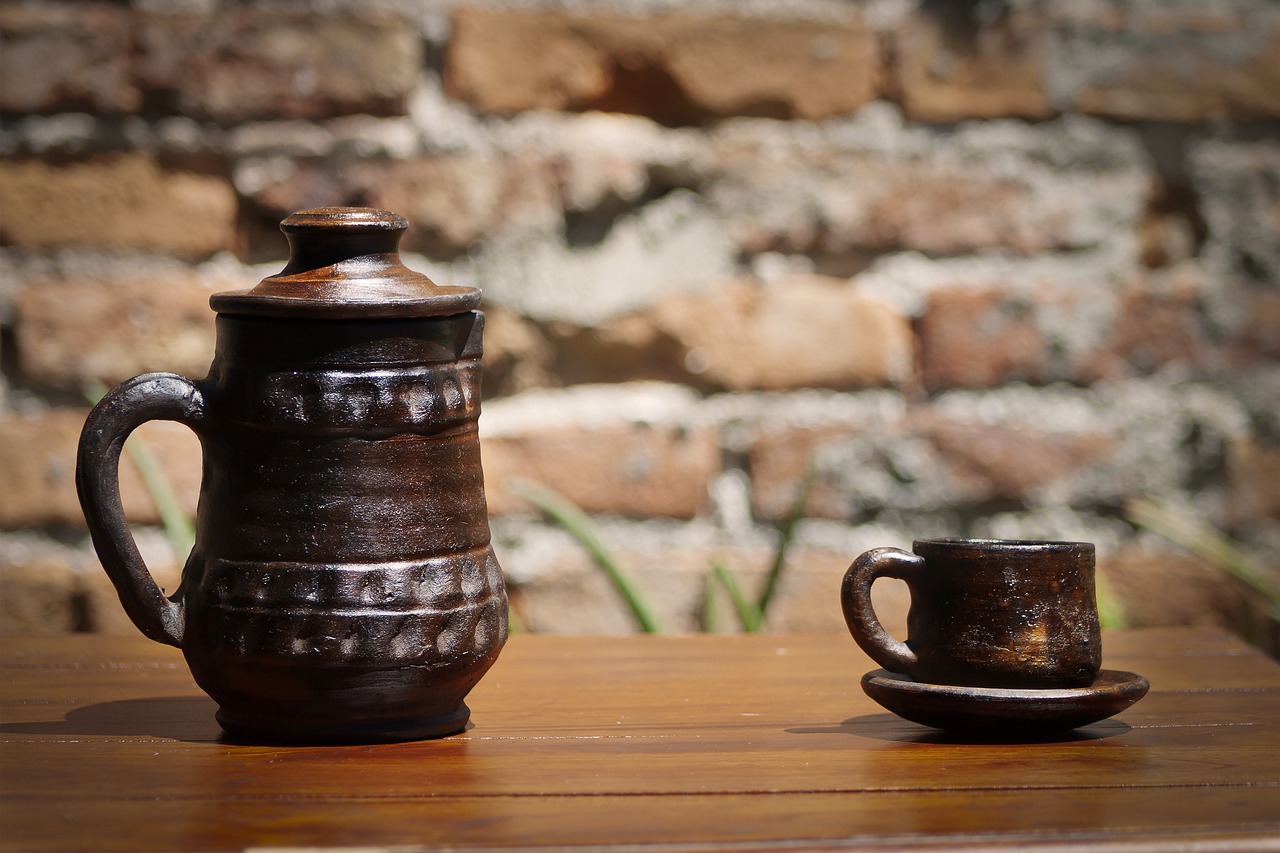
Best Practices for Handling Ceramics
When it comes to handling ceramic art, care and caution are your best friends. These delicate pieces, often crafted with intricate designs and vibrant glazes, require a gentle touch to ensure they remain intact and beautiful over time. Imagine holding a fragile flower; you wouldn’t squeeze it too tightly, right? The same principle applies to ceramics. Start by always washing your hands before touching these artworks. Natural oils and dirt can transfer onto the surface, potentially causing long-term damage.
When lifting a ceramic piece, make sure to support it properly. Use both hands to cradle the base and sides, avoiding any pressure on the rim or delicate features. If the piece is particularly large or heavy, it’s wise to ask for help. After all, teamwork makes the dream work! Additionally, if you're transporting ceramics, consider using padded boxes or crates to cushion them during the journey. This not only protects them from bumps and drops but also minimizes the risk of scratches or chips.
Another critical aspect of handling ceramics is being aware of your surroundings. Ensure that the area is clear of clutter and that you have enough space to maneuver without the risk of knocking over other items. If you’re displaying ceramics in a public space or at an event, be sure to communicate with others around you. A simple, “Hey, I’m moving this piece, so please watch out!” can prevent accidents and keep everyone safe.
Moreover, it’s essential to consider the temperature and humidity of the environment where you’re handling ceramics. Extreme temperature changes can cause ceramics to crack, while high humidity can lead to mold growth or damage to glazes. Always aim for a stable climate, ideally between 65°F to 75°F with a humidity level around 40% to 60%. This is where a little preparation goes a long way!
Lastly, when it comes to displaying ceramics, always use appropriate stands or supports. For example, large vases or bowls should be placed on sturdy surfaces, while smaller items can benefit from display cases or shelves that prevent them from falling. Remember, the right support not only enhances the aesthetic appeal but also ensures the longevity of your cherished pieces.
Proper cleaning is vital for maintaining ceramic art's appearance. Here, we discuss safe cleaning methods and products that preserve the integrity of ceramic materials without causing harm.
Using the right tools can make a significant difference in cleaning ceramic art. This section recommends specific tools that effectively clean while minimizing the risk of damage.
Avoiding certain cleaning mistakes is crucial for preserving ceramics. Here, we highlight common errors and how to prevent them to ensure the longevity of your ceramic pieces.
The way ceramic art is displayed can enhance its visual impact. This section covers various display techniques and considerations to showcase pieces attractively and safely.
Q: How should I store ceramic art when not on display?
A: Store ceramics in a cool, dry place, ideally wrapped in acid-free tissue paper or bubble wrap to prevent scratches and chips.
Q: Can I use regular cleaning products on my ceramics?
A: It’s best to avoid harsh chemicals. Use mild soap and water, and always test a small area first if you’re unsure.
Q: How can I prevent my ceramics from fading?
A: Keep ceramics out of direct sunlight and away from heat sources to maintain their vibrant colors.
Q: Is it safe to display ceramics outdoors?
A: While some outdoor ceramics are designed for that purpose, most should be kept indoors to protect them from the elements.

Cleaning Techniques for Ceramics
Cleaning ceramic art is not just about keeping it shiny; it's about preserving its beauty and integrity for years to come. Each piece tells a story, and improper cleaning can erase that narrative, leaving behind scratches or damage that can diminish its value. So, how do we ensure that our beloved ceramics remain in pristine condition? Let’s dive into some effective cleaning techniques that will keep your pieces looking their best.
First and foremost, it's essential to identify the type of glaze on your ceramic piece. Some ceramics have delicate finishes that require gentle handling, while others can withstand more rigorous cleaning. For instance, glossy glazes can often be wiped down with a soft, damp cloth, while matte finishes might need a different approach to avoid streaks. Always start with the least invasive method and escalate only if necessary.
When it comes to the actual cleaning process, the following techniques are highly recommended:
- Dusting: Use a soft, dry microfiber cloth to gently dust your ceramics. This prevents the buildup of dirt and grime that can lead to scratches.
- Wiping: For more stubborn dirt, dampen the cloth slightly with water. Avoid using excessive moisture, as it can seep into cracks and cause damage.
- Soaking: If the ceramic is particularly dirty, a gentle soak in lukewarm water can help loosen debris. Make sure to dry it thoroughly afterward to prevent moisture damage.
- Use of Mild Detergents: In cases of grease or sticky residues, a mild dish soap mixed with water can be effective. Just remember to rinse well and dry immediately.
Additionally, using the right tools can significantly enhance your cleaning routine. Soft-bristled brushes can reach intricate designs without scratching, while cotton swabs are perfect for cleaning small crevices. However, avoid harsh chemicals or abrasive materials that can harm the ceramic surface. A good rule of thumb is to test any cleaning solution on a small, inconspicuous area first.
Now, let’s not forget about the common mistakes that can turn a cleaning session into a disaster. One of the biggest blunders is using hot water, which can cause thermal shock, especially in older ceramics. Similarly, neglecting to dry the pieces properly can lead to mold and mildew growth, particularly in humid environments. Always handle your ceramics with care, as dropping them—even from a short distance—can lead to irreversible damage.
In summary, maintaining the beauty of your ceramic art requires a thoughtful approach to cleaning. By employing gentle techniques, using the right tools, and avoiding common pitfalls, you can ensure that each piece remains a stunning showcase of craftsmanship for years to come. Remember, your ceramics are not just objects; they are treasures that deserve respect and care.
Q: Can I use vinegar to clean my ceramics?
A: While vinegar is a natural cleaner, it can be too harsh for some ceramic finishes. It's best to test it on a small area first or stick to mild soap and water.
Q: How often should I clean my ceramic pieces?
A: The frequency of cleaning depends on the environment. If they are displayed in a dusty area, a light dusting once a week is advisable. For deeper cleaning, aim for once every few months.
Q: What should I do if my ceramic has a stain?
A: For stains, try soaking the piece in lukewarm soapy water. If that doesn't work, consider using a specialized ceramic cleaner, but always test first.
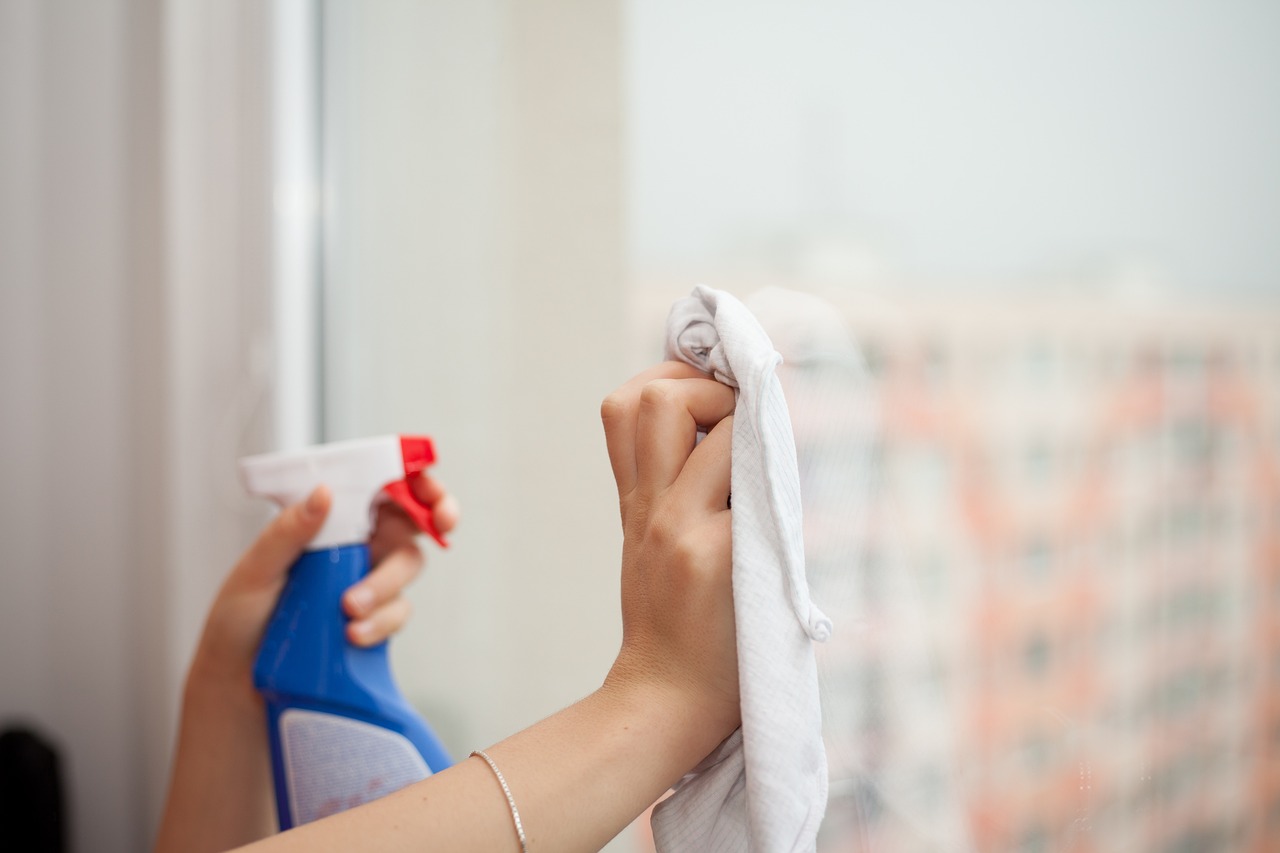
Tools for Cleaning Ceramics
When it comes to cleaning ceramic art, having the right tools is essential to ensure that you maintain the integrity and beauty of your pieces. Using inappropriate tools can lead to scratches, chips, or other forms of damage that can diminish the value of your ceramics. So, what exactly should you have in your cleaning arsenal? Let’s break it down!
First and foremost, a soft-bristle brush is a must-have. This tool is perfect for gently removing dust and dirt from intricate surfaces without causing any harm. Think of it as a gentle massage for your ceramics—removing the grime while keeping the original finish intact. Additionally, a microfiber cloth is invaluable for polishing your pieces after dusting. These cloths are designed to trap dirt and dust without scratching the surface, making them ideal for delicate ceramics.
Another important tool to consider is a small sponge, preferably one that is non-abrasive. This is useful for cleaning any stubborn spots that a brush might miss. Just remember to dampen it slightly with water to avoid soaking your ceramics. If you need to tackle a more challenging stain, you might want to have a mild dish soap on hand. It’s essential to choose a soap that is free from harsh chemicals, as these can damage the glaze or finish of your ceramics.
For those who are serious about their ceramic care, investing in a ceramic-safe cleaner can be a game-changer. These products are specifically formulated to clean ceramics without causing any harm. Always read the label to ensure they are safe for your specific type of ceramic, as some cleaners can be too harsh for certain glazes.
Lastly, don’t forget about gloves. Wearing a pair of cotton or latex gloves while cleaning can prevent oils and dirt from your hands from transferring to the ceramic surface. This simple step can help maintain the pristine condition of your pieces.
In summary, the right tools can make all the difference when it comes to cleaning ceramics. By equipping yourself with a soft-bristle brush, microfiber cloth, non-abrasive sponge, mild dish soap, ceramic-safe cleaner, and gloves, you can ensure that your ceramic art remains beautiful and well-preserved for years to come. Remember, treating your ceramics with care not only enhances their aesthetic appeal but also contributes to their longevity.
- What is the best way to remove dust from ceramics? Use a soft-bristle brush or a microfiber cloth to gently remove dust without scratching the surface.
- Can I use regular household cleaners on my ceramics? It’s best to avoid harsh household cleaners. Opt for mild dish soap or ceramic-safe cleaners instead.
- How often should I clean my ceramic art? Regular dusting is recommended, but deep cleaning can be done every few months or as needed.
- Are there any tools I should avoid when cleaning ceramics? Yes, avoid using abrasive sponges or harsh chemicals that can damage the glaze.
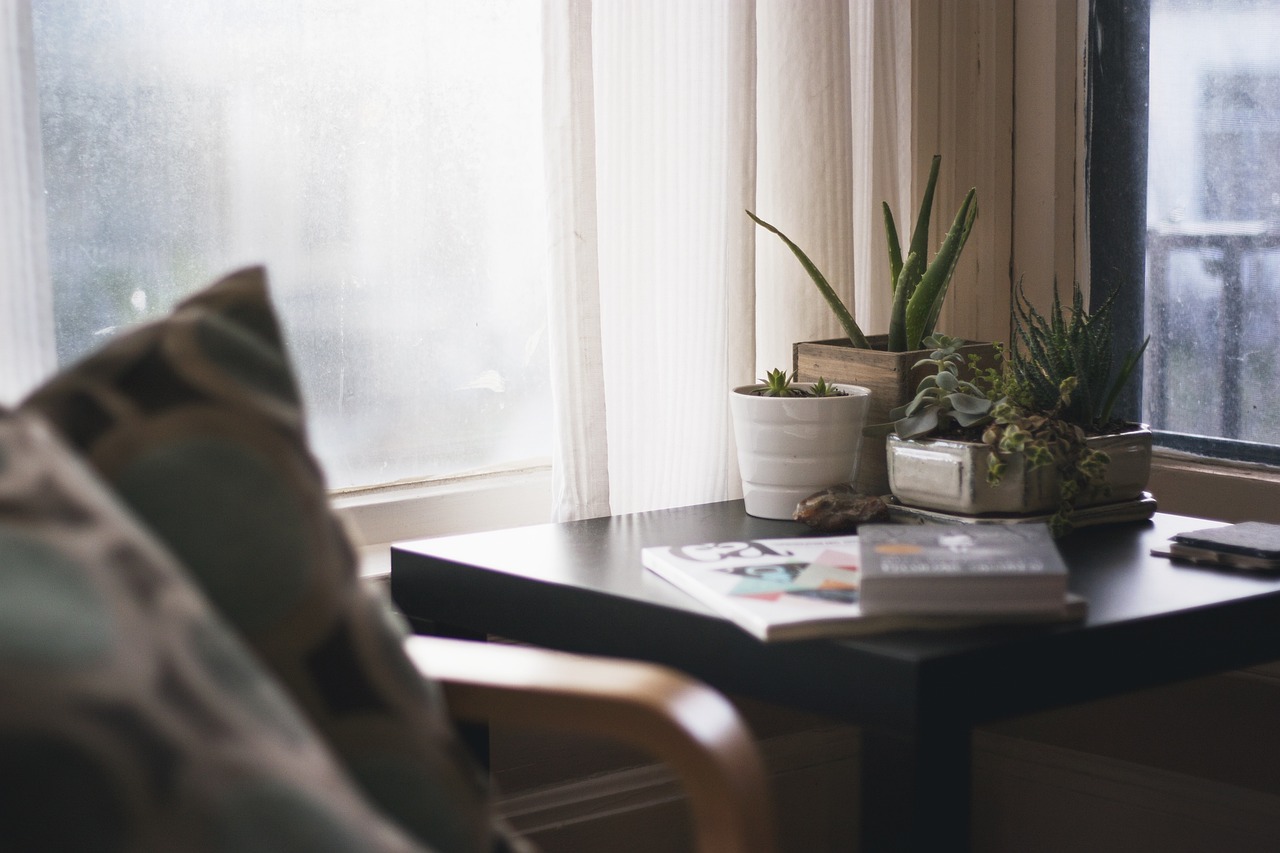
Common Mistakes to Avoid
When it comes to handling and displaying ceramic art, avoiding common mistakes can mean the difference between a cherished piece and a damaged one. One of the most frequent errors is using harsh cleaning agents that can erode the glaze or even the ceramic body itself. Many people assume that a little bit of elbow grease and a strong cleaner will do the trick, but this can lead to irreversible damage. Instead, opt for gentle, pH-neutral cleaners that are specifically designed for ceramics.
Another pitfall is neglecting to check the display environment. High humidity and extreme temperature fluctuations can cause ceramics to crack or warp over time. Imagine placing a delicate porcelain vase next to a heating vent—over time, that vase may succumb to the heat and humidity, leading to cracks that ruin its beauty. To prevent this, always monitor the conditions where your ceramics are displayed. Ideally, they should be kept in a stable environment, away from direct sunlight and extreme temperature changes.
Also, be cautious about how you handle your pieces. Many collectors and enthusiasts make the mistake of holding ceramics with bare hands, which can transfer oils and dirt onto the surface. It's best to use gloves when handling valuable or delicate pieces. This simple step can help maintain their pristine condition and keep them looking their best for years to come.
Lastly, another common mistake is overcrowding display areas. While it may be tempting to showcase as many pieces as possible, this can lead to accidental damage. Imagine a beautifully crafted ceramic bowl being knocked over by an adjacent piece because they were too close together. Instead, ensure that each piece has enough space to breathe and shine on its own. A well-thought-out display not only enhances the visual impact but also minimizes the risk of accidents.
By steering clear of these common mistakes, you can ensure that your ceramic art remains a source of joy and admiration for years to come. Remember, the goal is to preserve the beauty and integrity of each piece while showcasing them in a way that highlights their unique qualities.
Q: What is the best way to clean ceramic art?
A: The best way to clean ceramic art is to use a soft, damp cloth with a pH-neutral cleaner. Avoid abrasive materials that can scratch the surface.
Q: How can I tell if my ceramic art is in a safe environment?
A: Ensure that your ceramic art is displayed in a stable environment, away from direct sunlight, high humidity, and extreme temperature changes. A consistent room temperature is ideal.
Q: Should I use gloves when handling my ceramics?
A: Yes, using gloves can help prevent oils and dirt from transferring onto the ceramic surface, preserving its appearance.
Q: Is it okay to display ceramics outdoors?
A: It's generally not recommended to display ceramics outdoors, as exposure to the elements can cause damage. If you must display them outside, ensure they are covered and protected from direct exposure to sun and moisture.
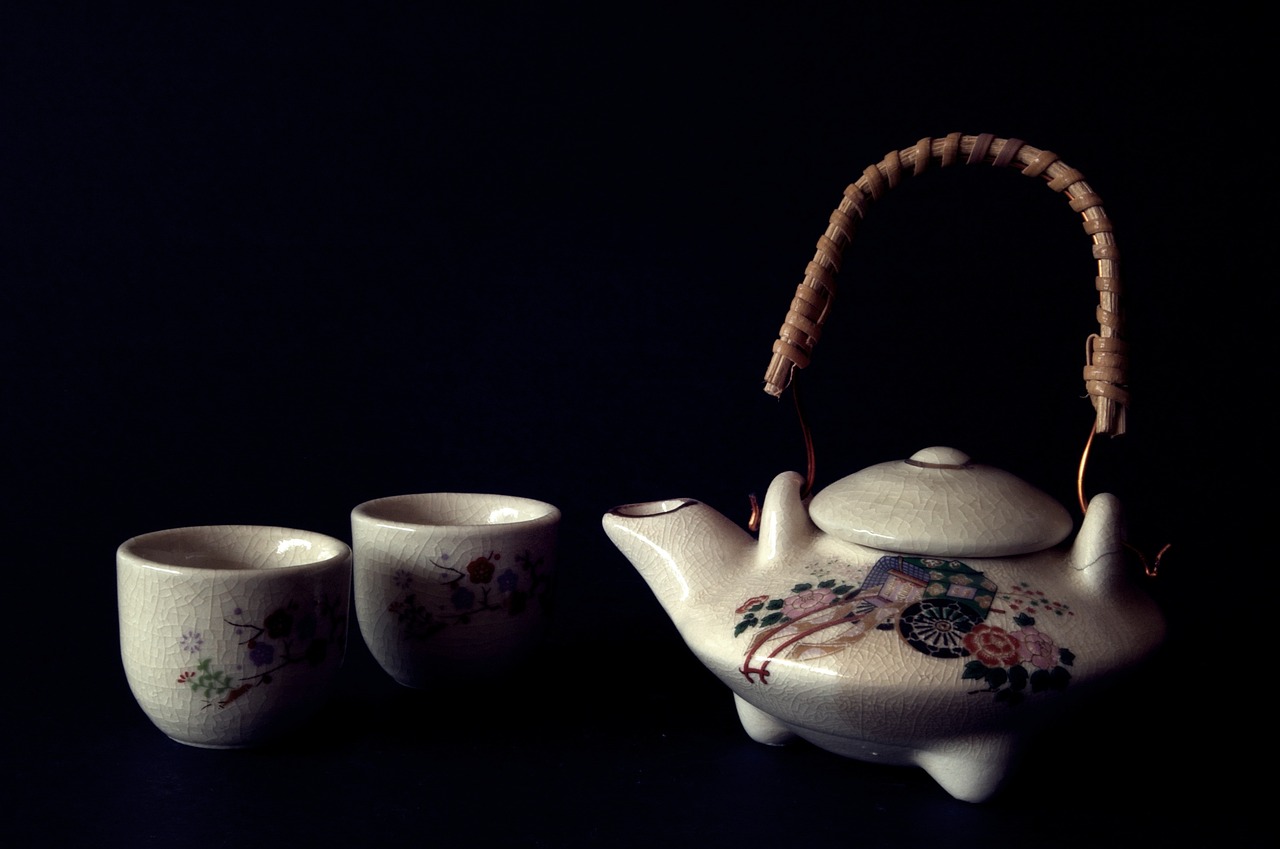
Displaying Ceramic Art Effectively
Displaying ceramic art is not just about putting pieces on a shelf; it’s an art in itself! The way you choose to showcase your ceramics can either elevate their beauty or diminish their impact. Think of your ceramic art as a star performer that needs the right stage to shine. Whether you’re a collector or an artist, understanding how to present these beautiful creations can make all the difference. So, how do you transform your ceramic pieces into eye-catching displays? Let’s dive into some effective strategies!
First and foremost, consider the context in which you are displaying your ceramics. Are they part of a themed collection or stand-alone pieces? Grouping ceramics by color, shape, or style can create a cohesive look that draws the eye. For instance, placing a series of blue vases together can evoke a calming oceanic feel, while a mix of vibrant colors can create a lively and energetic atmosphere. Remember, the goal is to tell a story through your display!
Next, think about the height and arrangement of your pieces. Varying the heights can add visual interest and depth to your display. Use stands or pedestals to elevate certain items, making them focal points. It’s like creating a landscape—some items should soar high while others provide a solid base. Additionally, ensure that your ceramics are spaced appropriately. Crowding them together can lead to visual chaos and potential damage. Aim for a balance that allows each piece to breathe and be appreciated.
Moreover, consider the background against which your ceramics will be displayed. A neutral backdrop can help your pieces stand out, while a textured or patterned background can add depth and intrigue. Just like a painter chooses the right canvas, you should choose a background that complements rather than competes with your ceramics. For example, a rustic wooden shelf can beautifully contrast with sleek, modern ceramics, enhancing their aesthetic appeal.
Lighting is another crucial factor in displaying ceramic art effectively. The right lighting can accentuate colors, textures, and shapes, making your pieces truly pop. Natural light is ideal, but be cautious of direct sunlight that can cause fading or damage over time. If using artificial lighting, consider options like spotlights or LED strips that can highlight specific pieces without generating too much heat. Think of lighting as the spotlight on a stage—it can transform an ordinary display into an extraordinary experience!
Finally, don’t underestimate the importance of protection. While you want your ceramics to be seen, you also want to keep them safe from accidents. Display cases can be a great way to protect valuable or fragile pieces while still allowing visitors to appreciate them. Additionally, consider using glass shelves or cabinets that not only safeguard your ceramics but also enhance their visibility. Just like a treasure chest, a well-designed display case can keep your artistic treasures safe while showcasing their beauty!
In conclusion, displaying ceramic art effectively is all about creating a harmonious balance between aesthetics and protection. By considering context, height, background, lighting, and protection, you can transform your ceramic pieces into stunning displays that captivate and inspire. So, go ahead—let your ceramics shine like the stars they are!
- What is the best way to clean ceramic art before displaying it? Use a soft, damp cloth and avoid harsh chemicals to prevent damage.
- How can I protect my ceramics from accidental damage? Consider using display cases or placing them out of reach in high-traffic areas.
- Is natural light safe for displaying ceramics? Yes, but be cautious of direct sunlight, which can fade colors over time.
- What types of lighting work best for showcasing ceramics? LED lights or spotlights are great options as they provide focused illumination without heat.

Choosing the Right Display Environment
When it comes to displaying ceramic art, the environment you choose can make or break the overall presentation and longevity of your pieces. Imagine placing a stunning ceramic vase in a dimly lit corner, where its colors fade into the shadows—what a waste! To truly appreciate the beauty and craftsmanship of ceramics, it’s essential to consider factors such as light, temperature, and humidity.
First and foremost, let's talk about lighting. Natural light can be both a friend and a foe. While it enhances colors and textures, prolonged exposure can lead to fading and damage. Ideally, you want to find a balance. A well-lit area with indirect sunlight is perfect for showcasing your ceramics without risking deterioration. If natural light isn't an option, consider using LED lights, which emit minimal heat and UV rays, making them a safer choice for your precious pieces.
Next up is temperature. Ceramics are sensitive to extreme heat or cold, which can cause them to crack or warp over time. Maintaining a stable room temperature, ideally between 65°F and 75°F (18°C to 24°C), will help preserve your art. It's also wise to avoid placing ceramics near heating vents, radiators, or air conditioning units, as fluctuating temperatures can be detrimental. Think of it like a cozy blanket for your ceramics—keeping them in a comfortable environment will ensure their beauty lasts.
Now, let’s dive into humidity. High humidity can lead to mold growth or even damage the glaze on your ceramics, while low humidity can cause them to dry out and crack. The ideal humidity level for displaying ceramics is between 40% and 60%. Utilizing a dehumidifier or a humidifier can help maintain this balance, especially in areas with extreme weather conditions. If you’re unsure of your room's humidity levels, a simple hygrometer can do the trick!
In summary, creating the right display environment for your ceramic art is crucial to its preservation and visual appeal. Here’s a quick recap of the key factors to consider:
- Lighting: Use indirect natural light or LED lighting to avoid fading.
- Temperature: Maintain a stable temperature between 65°F and 75°F.
- Humidity: Keep humidity levels between 40% and 60% for optimal preservation.
By paying attention to these elements, you’ll not only enhance the aesthetic appeal of your ceramic pieces but also ensure they remain in pristine condition for years to come. Just think of your ceramics as delicate flowers; with the right environment, they will bloom beautifully!
Q1: Can I display ceramics in direct sunlight?
A1: It's best to avoid direct sunlight, as it can cause colors to fade over time. Indirect light is ideal.
Q2: What temperature is too hot for ceramic art?
A2: Temperatures above 75°F can be risky, especially if they fluctuate. Aim for a stable environment.
Q3: How do I know if the humidity is too high for my ceramics?
A3: If you notice mold or a damp feeling in the air, it’s time to invest in a dehumidifier.
Q4: Can I use regular cleaning products on my ceramics?
A4: No, it's important to use gentle, non-abrasive cleaning products specifically designed for ceramics to avoid damage.
By following these guidelines and being mindful of the display environment, you can ensure that your ceramic art is showcased beautifully and preserved for future generations to enjoy.

Lighting for Ceramic Displays
When it comes to showcasing ceramic art, lighting plays a pivotal role in enhancing its beauty and allure. Think of lighting as the stage where your ceramics perform; the right illumination can transform a simple piece into a breathtaking focal point. The key is to strike a balance between visibility and protection, ensuring that your ceramics are both highlighted and preserved. So, how do you create the perfect ambiance for your ceramic masterpieces?
First off, consider the type of lighting you choose. Natural light can be incredibly flattering, but it comes with its own set of challenges. Direct sunlight can cause colors to fade and lead to thermal stress on your ceramics. Instead, opt for indirect natural light or use sheer curtains to diffuse the sunlight. This way, your pieces bask in a warm glow without the risk of damage.
Artificial lighting is another fantastic option. LED lights are particularly beneficial for ceramic displays as they emit minimal heat, reducing the risk of thermal shock. Additionally, LEDs come in various color temperatures, allowing you to select a warm light that enhances the colors of your ceramics. When positioning your lights, think about the angle and intensity. Placing lights at a 30-degree angle can create soft shadows that add depth and dimension to your pieces, making them more visually appealing.
Here are a few lighting types to consider:
- Spotlights: Great for highlighting specific pieces, creating a dramatic effect.
- Track lighting: Offers flexibility in directing light where it's needed most.
- Display case lighting: Built-in lights can illuminate ceramics from above or below, enhancing their features.
Moreover, think about the overall environment where your ceramics are displayed. Too much light can be just as detrimental as too little. Aim for a balanced approach that allows your ceramics to shine without overwhelming them. A good rule of thumb is to keep the light intensity low and the exposure time short. This will help maintain the integrity of your ceramics over time.
Finally, don’t forget about the mood you want to create. Lighting can evoke emotions and set the tone for your space. Whether you want a cozy, intimate atmosphere or a bright, energetic vibe, the right lighting can help you achieve that. Experiment with different setups and observe how your ceramics respond to various lighting conditions—it's all part of the fun!
Q: What type of lighting is best for ceramic displays?
A: LED lights are generally the best choice as they emit minimal heat and come in various color temperatures, allowing you to enhance the colors of your ceramics effectively.
Q: Can I use natural light for displaying ceramics?
A: Yes, but it’s essential to avoid direct sunlight as it can cause fading and thermal stress. Indirect natural light is a safer option.
Q: How can I prevent damage to my ceramics from lighting?
A: Keep the light intensity low and exposure time short. Using indirect lighting and avoiding high temperatures will help preserve your pieces.
Q: What angle should I position my lights for the best effect?
A: A 30-degree angle is often recommended as it creates soft shadows that add depth and dimension to your ceramics.

Display Cases and Shelving Options
When it comes to showcasing your ceramic art, the choice of display cases and shelving options can significantly impact both the aesthetics and the protection of your pieces. Imagine walking into a gallery where every piece of ceramic art is perfectly illuminated and displayed—it's not just about the art itself, but how it is presented. Selecting the right display method is crucial for highlighting the unique features of each piece while ensuring their safety.
First and foremost, consider the material of the display case or shelving. Glass cases are often favored for their ability to offer unobstructed views of the art while protecting it from dust and accidental contact. However, wooden shelves can add a warm, rustic charm that complements certain ceramic styles. The choice ultimately depends on the overall theme of your display and the specific characteristics of the ceramics you are showcasing.
Another important factor to consider is the size and scale of the display. A large, intricate ceramic sculpture might require a spacious, well-lit display case to truly shine, while smaller pieces can be effectively showcased on compact shelves. It's essential to ensure that the display does not overwhelm the art; instead, it should enhance its beauty. When arranging pieces, think about creating a visual hierarchy. For instance, placing larger pieces at eye level can draw attention, while smaller items can be artfully arranged around them to create a cohesive look.
Additionally, you might want to explore custom shelving options. Custom-built shelves can be tailored to fit your space and the specific dimensions of your ceramic pieces, allowing for a unique and personalized display. These shelves can also incorporate lighting features, such as LED strips, to further highlight the ceramics. Remember, the goal is to create an environment that not only protects the ceramics but also invites viewers to appreciate every detail.
Lastly, always consider the accessibility of your display. While it’s essential to protect your ceramics, they should still be easily viewable and engaging for your audience. Ensure that the display cases are at a comfortable height and that there is enough space around them for viewers to appreciate the pieces without feeling cramped. This balance of accessibility and protection is key to a successful display.
In summary, the right display cases and shelving options can transform the presentation of your ceramic art from ordinary to extraordinary. By carefully considering materials, size, arrangement, and accessibility, you can create a stunning showcase that not only protects your pieces but also captivates your audience.
- What materials are best for display cases? Glass and wood are popular choices, with glass offering visibility and wood providing warmth.
- How do I choose the right size for my display? Consider the size and scale of your ceramic pieces and ensure the display complements them without overwhelming.
- Can I customize my shelving? Yes! Custom shelving can be tailored to fit your space and the specific dimensions of your ceramics.
- How important is lighting in a display? Lighting is crucial as it enhances the beauty of the ceramics and draws attention to their details.
Frequently Asked Questions
- What is ceramic art?
Ceramic art refers to artworks made from clay and other ceramic materials, which are shaped and then fired at high temperatures to create durable pieces. This art form includes pottery, sculpture, and decorative items, showcasing a wide range of techniques and styles throughout history.
- How should I handle ceramic pieces to avoid damage?
Handling ceramic art requires a gentle touch. Always support the base of the piece and avoid holding it by fragile areas. When transporting ceramics, use padded boxes or wrapping to protect them from impacts. It's also wise to keep them away from high-traffic areas to prevent accidental knocks.
- What cleaning techniques are safe for ceramic art?
To clean ceramic art, use a soft, damp cloth or sponge with mild soap. Avoid abrasive cleaners or scrubbing pads that can scratch the surface. For intricate designs, a soft-bristled brush can help reach tight spots without causing harm.
- What tools are recommended for cleaning ceramics?
Some effective tools for cleaning ceramics include microfiber cloths, soft sponges, and small brushes. Additionally, using cotton swabs can help clean delicate areas without damaging the piece.
- What common mistakes should I avoid when cleaning ceramics?
Avoid using harsh chemicals or abrasive materials, as they can damage the finish. Never soak ceramic pieces in water, especially if they have delicate glazes or decorations. Also, be cautious of using too much pressure while cleaning, as this can lead to chips or cracks.
- How can I effectively display my ceramic art?
To display ceramic art effectively, consider using display cases or shelving that provide stability and protection. Ensure that the display area is clean and free from direct sunlight, which can fade colors. Additionally, arranging pieces at varying heights can create visual interest.
- What factors should I consider for the display environment?
When displaying ceramics, consider factors like light exposure, temperature, and humidity. Avoid placing them in areas with high humidity or extreme temperature fluctuations, as these can compromise the integrity of the materials.
- What type of lighting is best for ceramic displays?
Soft, diffused lighting is ideal for showcasing ceramic art, as it enhances colors without causing glare. Avoid direct sunlight, which can lead to fading. Consider using LED lights, as they emit less heat and are less likely to damage the ceramics over time.
- What are the best display case options for ceramics?
When choosing display cases for ceramics, look for options made from glass or acrylic that provide visibility while protecting the pieces from dust and damage. Adjustable shelving can also be beneficial, allowing you to customize the arrangement of your ceramics.


















